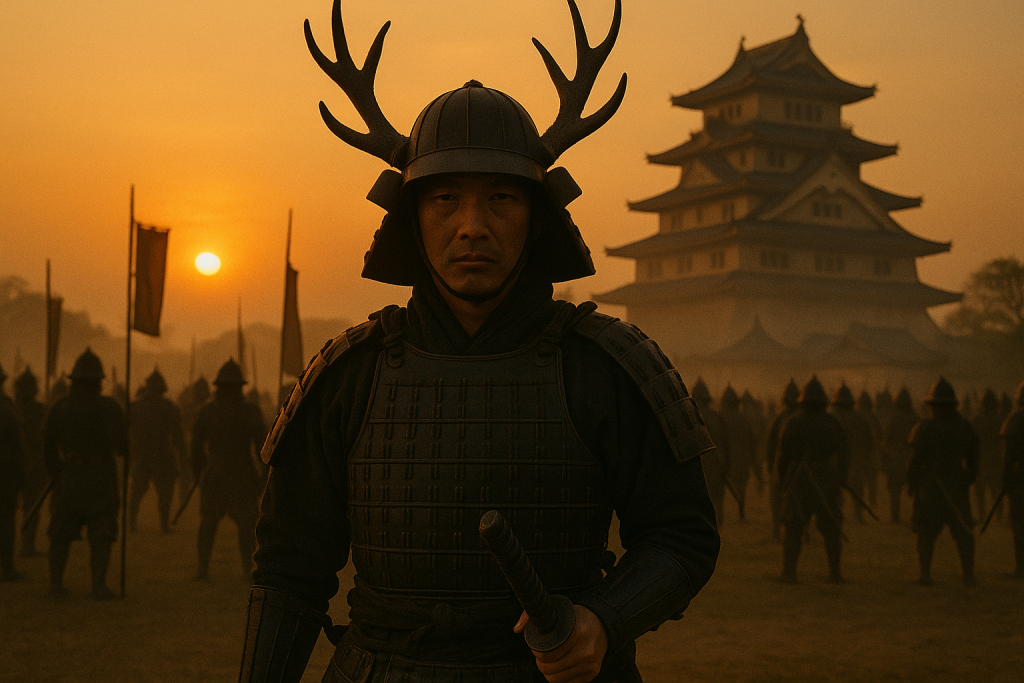Honda Tadakatsu Japans Legendary Samurai Who Fought 55 Battles Without Injury
Honda Tadakatsu (本多 忠勝, 1548–1610) stands as one of the most iconic and celebrated warriors of Japan’s tumultuous Sengoku and early Edo periods. A towering figure of loyalty, martial prowess, and near-mythic invincibility, Tadakatsu carved his place in history as one of the “Four Heavenly Kings of Tokugawa”—the elite generals who propelled Tokugawa Ieyasu toward ultimate dominance over Japan.

The Man Behind the Legend
Born in 1548 in Mikawa Province (modern-day Aichi Prefecture), Tadakatsu entered the service of Tokugawa Ieyasu at a young age. Through steadfast loyalty and relentless bravery, he rose to become not just a trusted vassal but a living embodiment of samurai virtues.
Tadakatsu’s military career is a near-unparalleled saga of survival and success. He reportedly fought in over fifty-seven battles—including some of the bloodiest conflicts of the age—without sustaining a single serious injury. This astonishing record earned him legendary titles like “The Warrior Who Surpassed Death” (Shini-yuku o Koeta Bushi).
An Iconic Presence on the Battlefield
Tadakatsu’s appearance alone could stir awe and terror among his enemies. He was famously clad in jet-black armor bound with iron hinges, a stark and fearsome sight among the colorful patchwork of Sengoku battlefield gear. Crowned atop his helmet was his most distinctive feature: a magnificent pair of deer antlers. These antlers were not merely decorative—they symbolized both ferocity and indomitable strength, making Tadakatsu instantly recognizable on the field.
Adding to his martial majesty was his renowned warhorse, Mikuniguro. While details about Mikuniguro’s exploits are less documented than those of his master, the pairing of Tadakatsu and his steed became part of his growing legend, representing speed, resilience, and power.
The Spear That Cut the Air: Tonbogiri
Although tales sometimes claim Tadakatsu wielded a katana named “Nakatsukasa Masamune,” credible historical evidence supports a different centerpiece to his arsenal: the legendary spear Tonbogiri (蜻蛉切, “Dragonfly Cutter”).
Tonbogiri’s fame was such that it was said a dragonfly landing on its blade would be cut cleanly in two by the weapon’s unmatched sharpness. One of the “Three Great Spears of Japan”, Tonbogiri remains one of the most celebrated arms of the samurai era, firmly linked to Tadakatsu’s nearly supernatural reputation.
Heroics Across the Great Battles
Honda Tadakatsu fought in many of the Sengoku period’s defining battles:
- Battle of Anegawa (1570): Fighting alongside Tokugawa and Oda Nobunaga against the Azai and Asakura clans.
- Battle of Mikatagahara (1572): Where, even amid defeat by Takeda Shingen’s superior forces, Tadakatsu’s valiant defense helped prevent total collapse.
- Battle of Sekigahara (1600): The battle that paved the way for Tokugawa’s establishment of the shogunate. Although already a senior and semi-retired general by this point, Tadakatsu still contributed to ensuring victory.
At every turn, Tadakatsu embodied the unbreakable will of the Tokugawa cause. His survival through dozens of brutal battles added to his near-mythic status—one that saw even enemies show grudging admiration for his valor and skill.
The Man Beyond the Armor
Despite his battlefield ferocity, historical accounts describe Tadakatsu as a man of measured temperament, loyalty, and discipline. He was never rash in combat; his survival owed not just to his strength but to his exceptional judgment and tactical acumen.
After Tokugawa Ieyasu secured control over Japan, Tadakatsu was rewarded with substantial lands and titles, becoming the daimyo of Otaki Domain in Kazusa Province. Unlike many samurai who craved court influence, Tadakatsu retired relatively quietly from politics, focusing instead on managing his fief and maintaining his family’s legacy.
He passed away peacefully in 1610—a rare end for a man so thoroughly entwined with the violence of his era.
Legacy of a Legend
Today, Honda Tadakatsu’s name is etched into Japanese history as a paragon of samurai virtue—courage, loyalty, and martial excellence. His black armor with deer antlers remains one of the most iconic images of the Sengoku period, and his legendary spear Tonbogiri is revered to this day.
Though some tales of his exploits—such as the katana “Nakatsukasa Masamune” or his supposed literal invincibility—are embellishments of later generations, they do little to diminish the very real greatness he achieved in life.
Honda Tadakatsu was not merely a figure of myth; he was a flesh-and-blood warrior who, through sheer will and skill, came to “surpass death itself.”